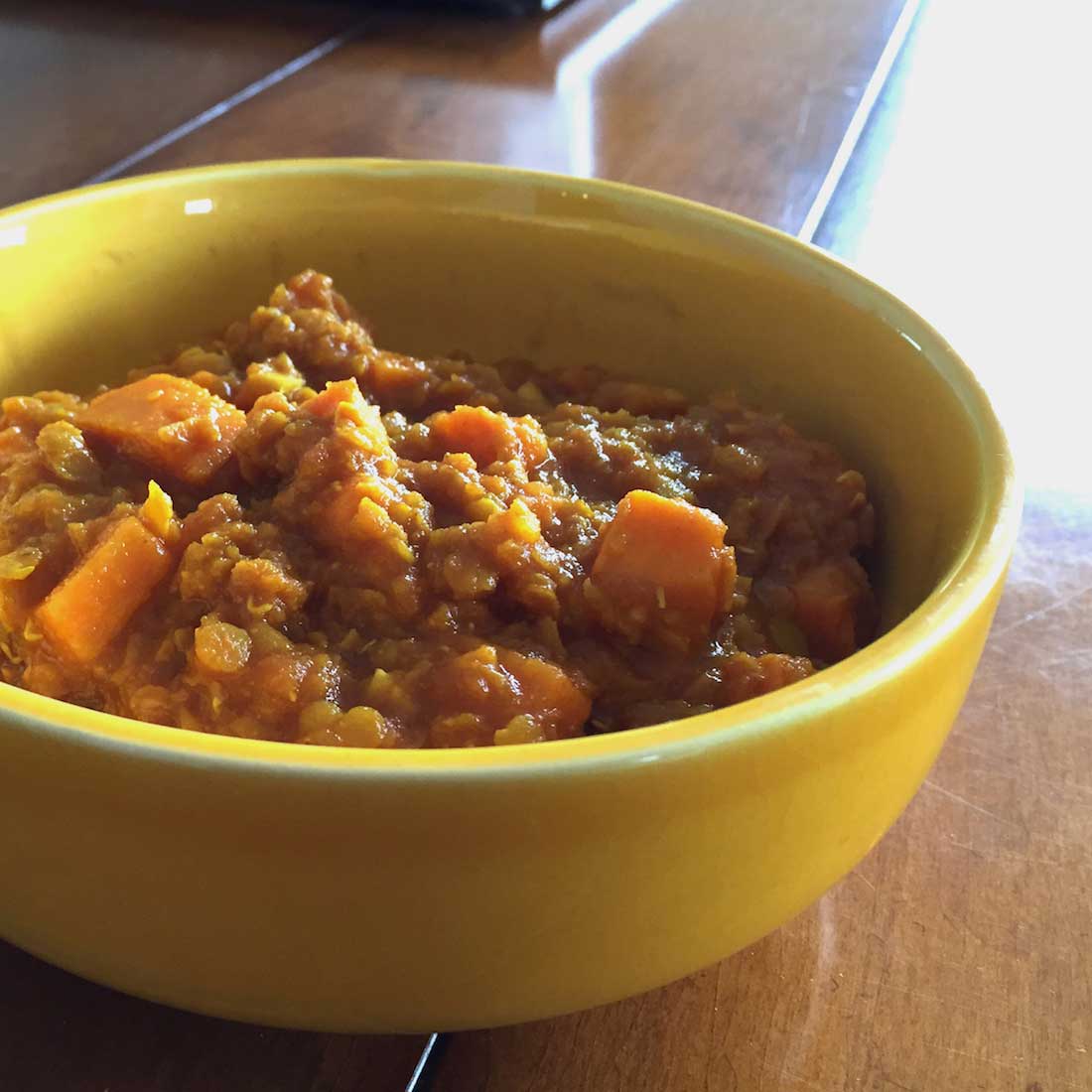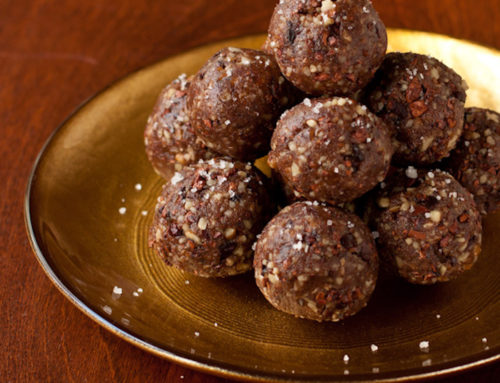This sweet potato red lentil dal recipe is one of my favorite dishes. You can make it in one pot, and it requires very minimal preparation. It’s easy enough to make on a work night, and filling enough to keep you satisfied throughout the rest of your evening.
With lentils and sweet potatoes, this red lentil dal is rich in fiber. Most of us don’t eat enough fiber each day, so tasty recipes like this one are a simple way to increase your intake. Legumes and pulses in general are great sources of fiber, as well as plant-based protein. Together these two nutrients keep you full and stabilize your blood sugar.
Lentils are also one of the few high protein foods that are alkaline-forming in the body. When your body is too acidic, it creates a pro-inflammatory environment. The more inflammation you have in your body the more pain you will feel. The right foods however can increase or decrease inflammation in there body, and therefore naturally reduce pain.
This red lentil dal fits into an anti-inflammatory diet, which I always recommend my patients eat if they experience any type of pain. As a general rule of thumb plant-based proteins, like lentils, are generally less inflammatory than animal-based proteins like chicken or beef. There are some exceptions however, such as fish, which fits into an anti-inflammatory diet for their omega-3 fatty acid benefits.
Digesting beans and legumes
Some people complain of digestive issues when it comes to eating beans, legumes or pulses. It might be because your body isn’t used to high fiber foods, in which case you’ll likely adapt as you eat legumes more regularly. But it could also be because of how they’re prepared.
Legumes contain phytic acid. In nature it’s necessary to protect the plant before germination, but in humans it can be a little hard to digest. Phytic acid can inhibit essential digestive enzymes which in turn make it seem like legumes are hard on the stomach. It also acts as anti-nutrient impeding the absorption of calcium and iron.
But that doesn’t mean that you should avoid eating legumes and pulses, it just means you should make them from scratch. When you buy beans in a can, they’re typically just cooked until soft. However, if you cook them at home you can soak them beforehand, which helps to break down some of the phytic acid making them easier to digest.
If you do any healthy meal planning, just set your legumes out in a bowl of water the night before you plan to make this red lentil dal recipe and soak for 8-10 hours or overnight. You can also batch cook beans or lentils, and freeze them for quick and easy use throughout the month.
How to Make Yummy Red Lentil Dal with Yams
Sounds simple right? Let’s get to the recipe.
Ingredients
- 2 tbsp extra virgin olive oil
- 1 cup finely chopped onion
- 2 1/2 cups (10 ounces, about 1 medium) diced yams (1" cubes)
- 1 tbsp minced ginger
- 2 garlic cloves, minced
- 1 hot chili (or to taste)
- 1 cup red lentils
- 2 tsp ground coriander
- 2 tsp ground cumin
- 2 tbsp turmeric
- 1 tsp ground ginger
- 1 cup canned tomatoes, chopped
- 4 cups low sodium vegetable stock (or water)
- salt, to taste
- 3 tbsp fresh cilantro, chopped
- Optional
- 3 tbsp date syrup (a few dates blended with water into a syrup) - to balance the bitterness of the turmeric)
- lemon juice, to taste - to enhance the flavor as needed
Instructions
- In a large put, heat the olive oil and sauté the onion, garlic and fresh ginger until fragrant.
- Add all the the remaining ingredients, and cook everything for 45 minutes, or until softened.
- Serve warm.
Ingredients
- 2 tbsp extra virgin olive oil
- 1 cup finely chopped onion
- 2 1/2 cups (10 ounces, about 1 medium) diced yams (1" cubes)
- 1 tbsp minced ginger
- 2 garlic cloves, minced
- 1 hot chili (or to taste)
- 1 cup red lentils
- 2 tsp ground coriander
- 2 tsp ground cumin
- 2 tbsp turmeric
- 1 tsp ground ginger
- 1 cup canned tomatoes, chopped
- 4 cups low sodium vegetable stock (or water)
- salt, to taste
- 3 tbsp fresh cilantro, chopped
- Optional
- 3 tbsp date syrup (a few dates blended with water into a syrup) - to balance the bitterness of the turmeric)
- lemon juice, to taste - to enhance the flavor as needed
Instructions
- In a large put, heat the olive oil and sauté the onion, garlic and fresh ginger until fragrant.
- Add all the the remaining ingredients, and cook everything for 45 minutes, or until softened.
- Serve warm.
Chew on this
If you find it hard to eat healthy on a busy schedule, try portioning out the red lentil dal and freezing it for the days you won’t have time to cook. Homemade frozen meals are significantly more healthy than anything you’ll likely grab on the go.
What are your secrets to eating healthy while you’re busy? Share your tips with us in the comments below.





